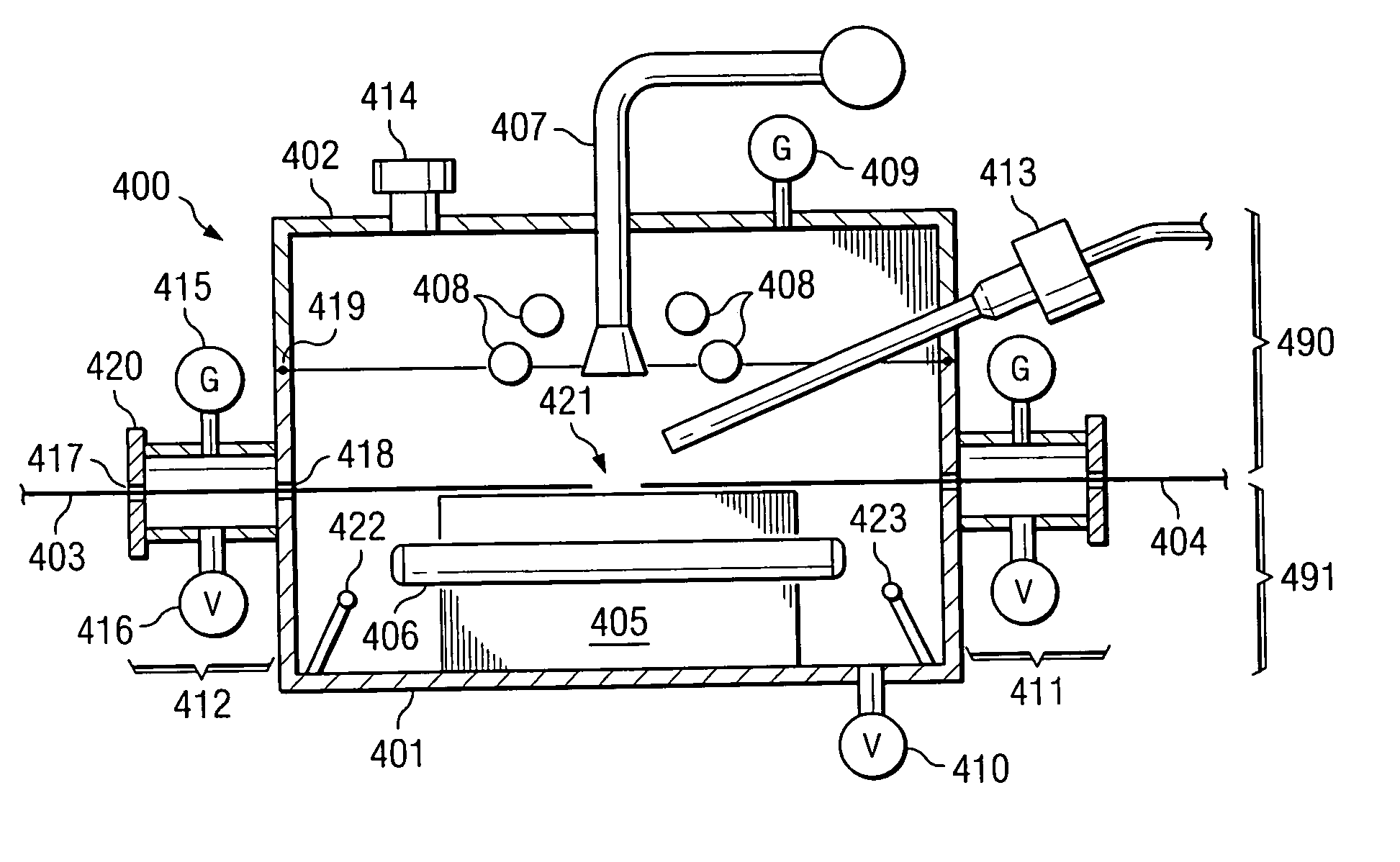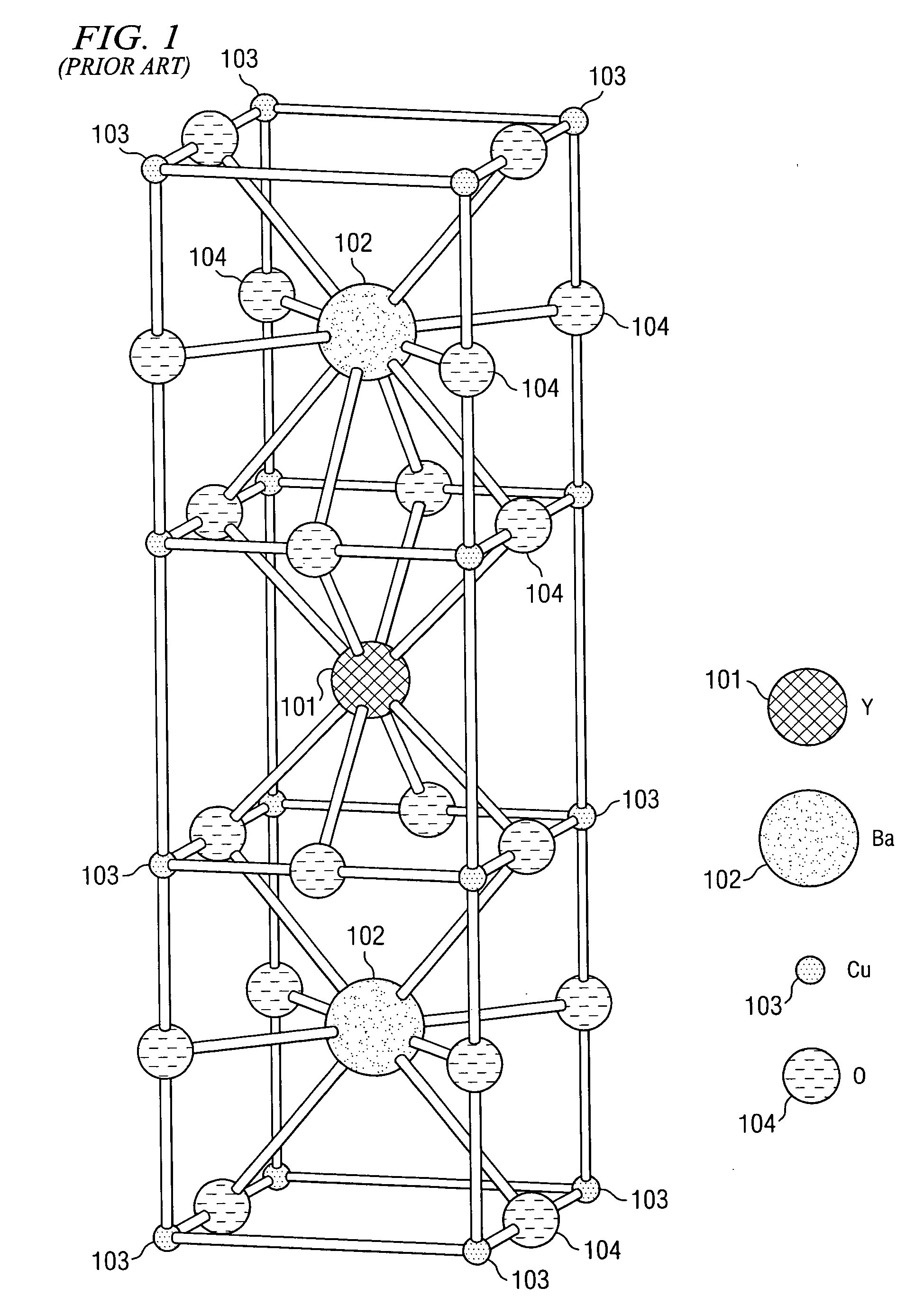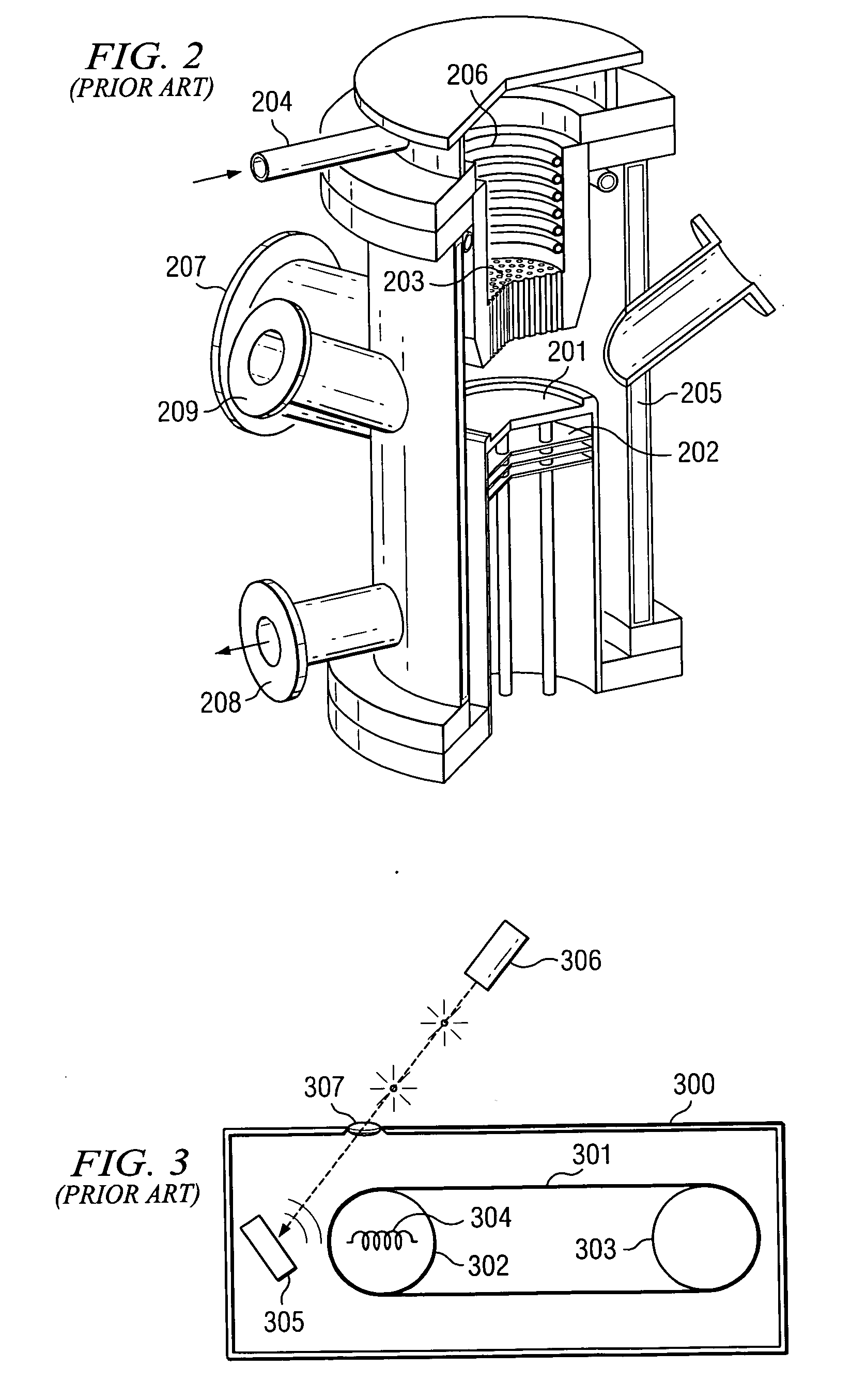System and method for joining superconductivity tape
a superconductivity tape and superconducting technology, applied in the field of superconductor materials, can solve the problems of loss, power dissipation, electric resistance, etc., and achieve the effects of reducing the superconducting properties of the wire, reducing the resistance of the wire, and ensuring the connection
- Summary
- Abstract
- Description
- Claims
- Application Information
AI Technical Summary
Benefits of technology
Problems solved by technology
Method used
Image
Examples
Embodiment Construction
[0023] Various embodiments of the invention are manifested in a portable joiner. The portable joiner is used to join two pieces of superconductor (SC) material and form a single piece of material that retains the superconductive properties of the two pieces. The joiner joins the two pieces both mechanically and electrically. For example, two pieces of SC tape, each of which may be very long in length (e.g. 1000 meters) may be connected by the joiner. Since the joiner is portable, the two pieces that are to be joined may be in the field, and away from the production facility.
[0024]FIG. 4 depicts portable joiner 400 according to various embodiments of the invention. The joiner 400 that connects two superconductor pieces, 403, 404 to form a longer piece of high temperature superconducting (HTS) material. Joiner 400 operates to deposit a layer of SC material that connects the superconductor layers of the two pieces, such that the HTS material is atomically ordered with large, well-orie...
PUM
 Login to View More
Login to View More Abstract
Description
Claims
Application Information
 Login to View More
Login to View More - R&D
- Intellectual Property
- Life Sciences
- Materials
- Tech Scout
- Unparalleled Data Quality
- Higher Quality Content
- 60% Fewer Hallucinations
Browse by: Latest US Patents, China's latest patents, Technical Efficacy Thesaurus, Application Domain, Technology Topic, Popular Technical Reports.
© 2025 PatSnap. All rights reserved.Legal|Privacy policy|Modern Slavery Act Transparency Statement|Sitemap|About US| Contact US: help@patsnap.com



